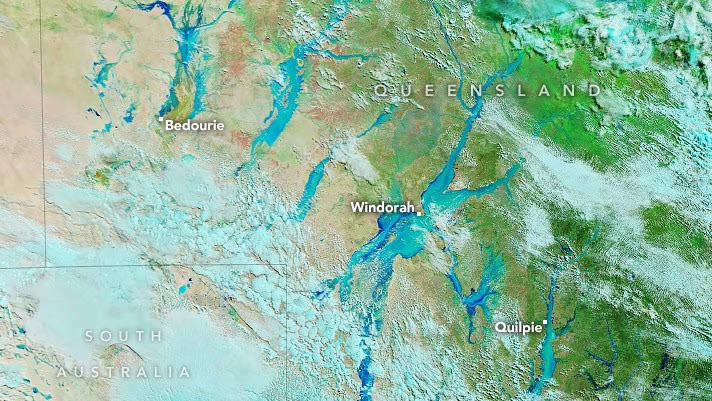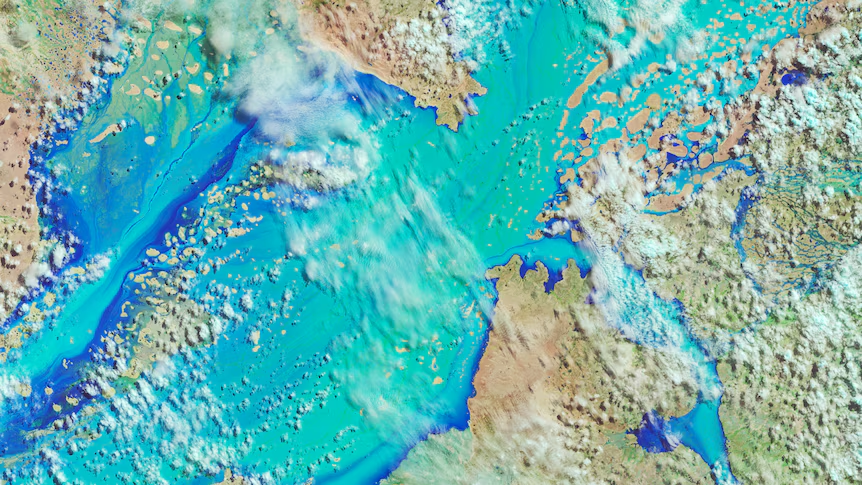Floods By Emily Dobson BBC News

In short:
NASA’s Soil Observatory has discharged obsequious pictures appearing to show the scale of flooding in outback Queensland.
More than 600 millimetres of rain—about twofold the annual normal—fell in a few parts of the state’s west.
What’s next?
The weather bureau says dryer conditions are on the way, but floodwater is expected to linger for weeks.
NASA:
NASA’s Soil Observatory has discharged adherent pictures appearing to show the scale of flooding in Western Queensland after overwhelming precipitation in March.
Nearly twofold the annually normal amount of rain fell in a few parts of the locale, causing streams to swell over the outback and devouring an area of land twice the estimate of Victoria.
The pictures paint a picture of the tremendousness of the flooding at Cooper Rivulet, close to Windorah.
They were captured by the Landsat 9 Operational Arrive Imager (OLI) on Walk 5 some time recently, seriously affected by precipitation, and by the Landsat 8 on Walk 29.

In these false-colour images, water appears as dark and light blue, bare ground is brown, and vegetation is bright green.
The flooding has cleared out a path of pulverisation—levee banks burst in southwest communities, inundating Eulo and Thargomindah and constraining more than 200 individuals out of their homes and businesses.
More than 140,000 head of animals are declared either dead or missing.
The extended damp season is coming to a conclusion, but floodwater is anticipated to wait for weeks some time recently making its way south to Australia’s biggest lake, Kati Thanda-Lake Eyre, almost 600 kilometres from Windorah.